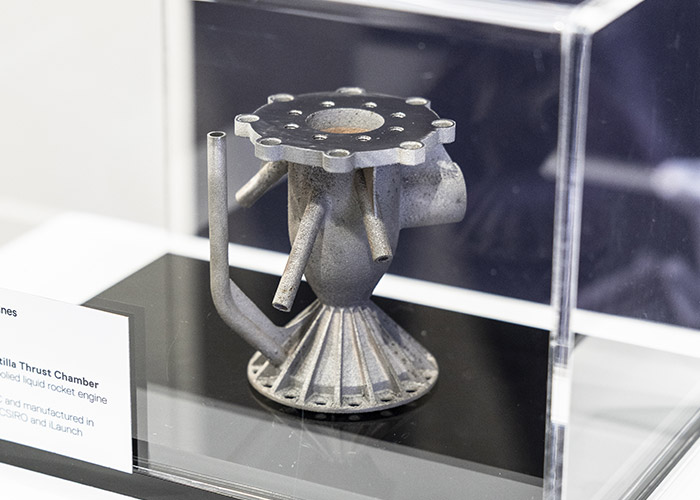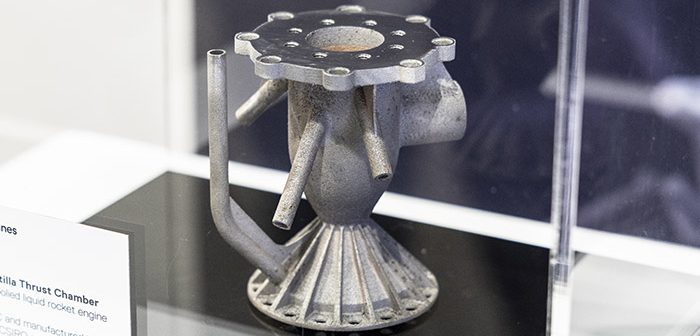
A milestone in Australia’s sovereign space manufacturing capability has been reached, with the successful production of the nation’s first bimetal rocket thruster using multi-material additive manufacturing (3D printing).
The thruster was developed by Space Machines Company (SMC) and manufactured at Australia’s national science agency CSIRO’s Lab22 facility using a Nikon SLM Solution SLM280 2MA 3D metal printer. The innovation leverages multi-material laser powder bed fusion (LPBF) to combine two high-performance metals in a single print: high strength steel for structural strength as the outer jacket and copper alloy for high thermal conductivity. This combination allows the thruster to endure extreme heat while remaining lightweight and robust, an uncommon design not typically seen in conventional, single-metal rocket propulsion systems.
“We strive to build sovereign space capabilities by developing, manufacturing and operating space technology right here in Australia,” said Darin Lovett, Executive Director of iLAuNCH. “We’re proud to support a project that demonstrates how Australian-led innovation is building world-class space technology and capability locally.”
Traditional methods for manufacturing rocket thrust chambers involve machining cooling channels into a copper liner and brazing it to a steel jacket, a costly, time-intensive process with multiple failure points. With multi-material 3D printing, both metals are printed simultaneously, reducing production complexity, cost and time while increasing design flexibility and durability.
The thruster forms a key part of Space Machine’s Scintilla propulsion system, which requires precise, repeatable and durable thrust to carry out close proximity operations in orbit. The regenerative cooling provided by the copper alloy channels ensures the thruster can withstand repeated firings and long burn durations, while the steel jacket maintains structural integrity under pressure.
“This achievement showcases the potential of multi-material additive manufacturing for complex, high-performance parts,” said CSIRO Senior Research Scientist Dr Cherry Chen. “By placing each material exactly where it’s needed, we can improve functionality, reduce waste and open up new design possibilities for a wide range of industries.”
The technology has broader applications across sectors such as automotive, biomedicine, injection moulding, toolmaking, and heat exchanger manufacturing. Anywhere parts require distinct material properties in different locations.





